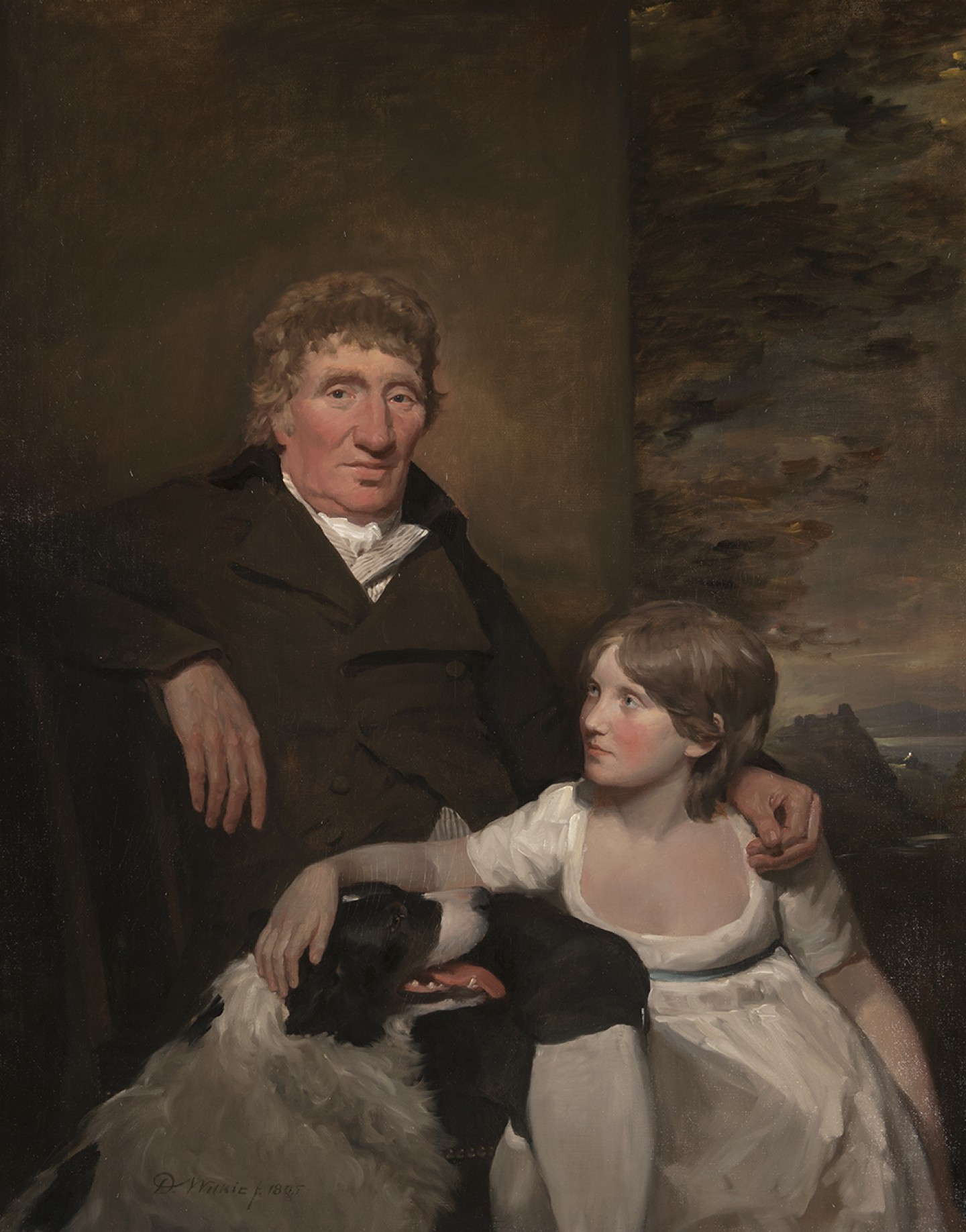DESCRIPTION
Sir Walter Scott’s novel Old Mortality, published in 1816, tells of one Robert Paterson who wandered through Scotland at the end of the eighteenth century; he acquired his nickname ‘Old Mortality’ through his work repairing and cleaning the tombs of the Cameronians (an extreme Presbyterian sect noted for their austerity and devotion). Scott describes his characteristic garb as including ‘a blue bonnet of unusual dimensions’ and ‘a large old-fashioned coat’, breeches, leggings and strong shoes, studded with hobnails.
Scott and Wilkie enjoyed an excellent relationship with a high regard for each other. Both excelled in the detailed description and chronicling of events, Scott in his novels and Wilkie in his paintings of everyday life, and it became a commonplace to draw parallels between them. Scott himself helped initiate this by using the phrase ‘a scene which our Wilkie alone could have painted’ in his description of a cottage interior in The Antiquary (1816), a compliment which the younger man much appreciated. Wilkie read Old Mortality soon after it was published and when he was on holiday in Scotland in the summer of 1817 Scott invited him to stay at Abbotsford where he painted the group portrait, The Abbotsford Family. The two men met many times thereafter, in both London and Scotland.
DETAILS
-
Artist
David Wilkie
-
Date
1820
-
Medium
Watercolour on paper
-
Object number
928
-
Dimensions unframed
14 × 10 cm
-
Dimensions framed
38 × 28 × 2 cm
-
Marks
Signed and dated bottom right
ARTIST PROFILE
Sir David Wilkie RA, 1785-1841
In the first three decades of the nineteenth century Sir David Wilkie stood alongside Constable and Turner as one of the three greatest British painters of the period; indeed, in his own lifetime his reputation - nationally and internationally - was as high as or higher than that of the other two. Wilkie was a pre-eminent genre painter with an exceptional gift for observation of character, his early work being in the manner of the Dutch painters Ostade and Teniers. It is no exaggeration to say that all Victorian genre painting in England and Scotland derives from Wilkie. Subsequently he turned to historical genre and, later, to portraiture. His work attracted the wildest popularity, particularly through the medium of engravings.
Born in Cults, in Fife, the third son of the parish minister, Wilkie enrolled for art classes at the Trustees' Academy in Edinburgh when he was fourteen. In 1805 he moved to London, studying at the Royal Academy Schools. The following year he exhibited The Village Politicians at The Royal Academy and became an overnight success. Thereafter his rise to fame was meteoric. When his masterpiece Chelsea Pensioners (celebrating Wellington's victory at Waterloo) was exhibited at the academy in 1822 at the astonishing price of 1200 guineas [£1260], there was such a clamour to view the painting that a crush barrier had to be erected to protect it, a previously unheard of measure.









